What is SAP automation?
Automation refers to the use of technology to perform tasks that would otherwise require human intervention. In the context of business operations, automation can include everything from simple repetitive tasks to complex processes that involve multiple systems and data sources.
SAP automation involves utilizing various tools and technologies to streamline processes within SAP systems. This can range from automating routine tasks to integrating different SAP modules and external systems. The goal is to enhance productivity, reduce errors, and provide greater visibility into business operations.
The benefits of automation in SAP
As we discussed in the introduction, SAP automation is an important emerging trend that more and more enterprises adopt. Here are the 5 major reasons why businesses adopt SAP automation tools and why you should consider doing the same.
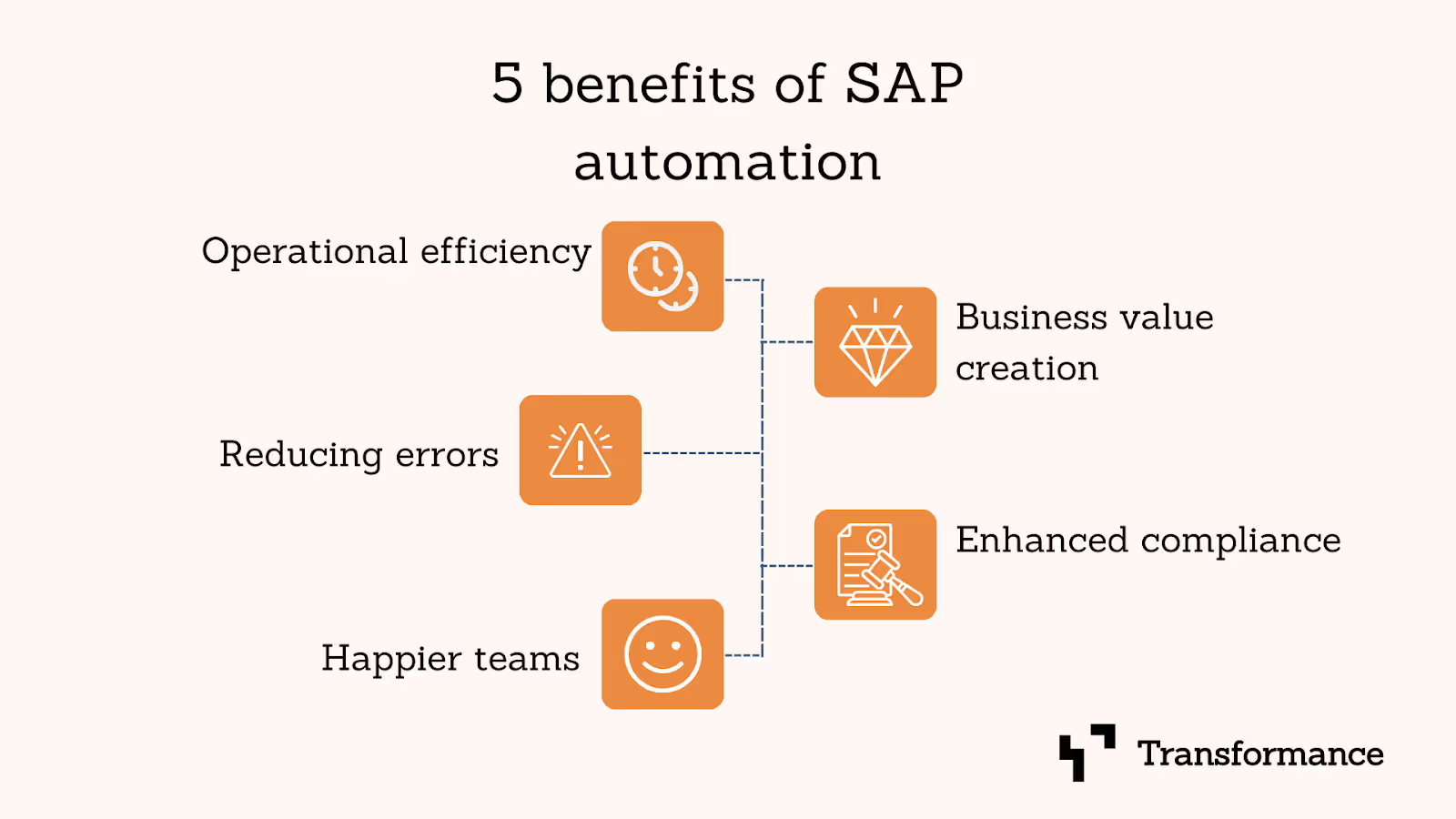
Increase operational efficiency
When speaking to executives about why they need more automation in their business, operational efficiency is the most quoted - for SAP automation in particular, the picture is no different.
SAP automation enables teams to streamline their processes by automating repetitive tasks while reducing manual effort and errors. This results in faster turnaround times for all team projects and ongoing to-dos. The more a process is automated and standardized, the faster high quality information and data can flow through the enterprise. A study by Gartner reports that automation could save up to 30% of a full-time employee’s time in the finance department. This equates to 25,000 hours annually, potentially saving $878,000 for an organization with 40 full-time accounting staff.
Create business value
One of the most significant benefits of SAP automation is its ability to free up valuable human resources. By automating routine tasks, teams can not only reduce the time spent on repetitive tasks but also redirect their efforts towards more strategic initiatives, fostering innovation and driving growth.
Mckinsey’s research found that automation and AI will change the amount of time spent on various activities. For example, the amount spent to basic cognitive skills, such as data input and processing, will decrease by 15%. Similarly, hours spent for physical and manual skills are expected to decline by 14%.
Such studies indicate that automation can enhance productivity by saving time from manual tasks, allowing employees to focus more on complex, creative, and critical decision-making activities making your enterprise more agile and innovative as a result.
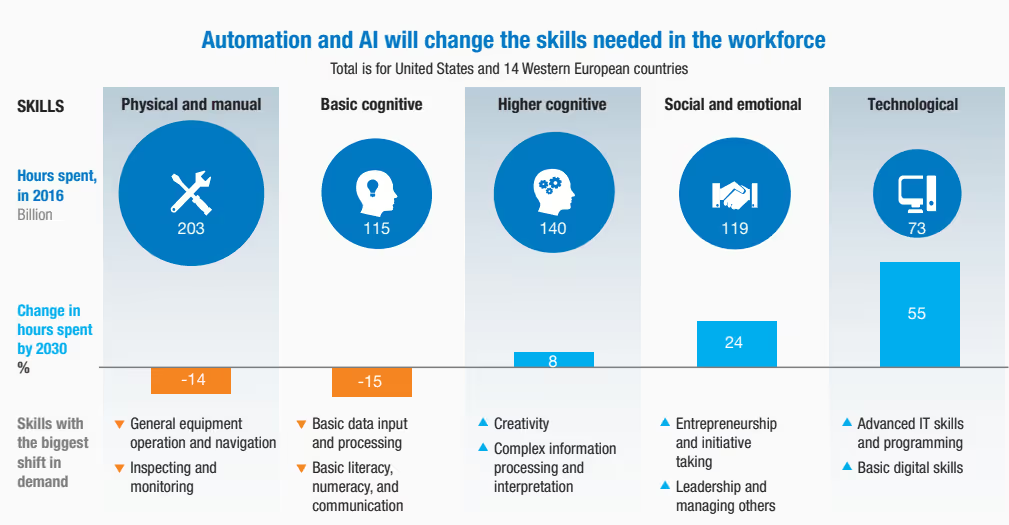
Reduce errors and improve data consistency
Be it in posting your CATS timesheets or finance journal entries, SAP automation can help you maintain better data quality throughout your ERP and in all the adjacent systems in your enterprise. Because machines and code do not fall victim to many weaknesses of us humans, SAP automation tools can help your teams reduce errors and thus enhance data quality throughout your organization.
In addition, the increased efficiency of processes explained above, ensures that this accurate and consistent data is available faster and can thus have more real-time impact.
Enhance compliance and risk management
Compliance and risk management are important for all enterprises and by extensions for their SAP processes. Especially the Finance, Accounting, and Controlling but also HR and procurement data is crucial to enable comprehensive audit-trails and guarantee, e.g., tax compliance. Processes which are too manual can increase compliance risks where data trails become inconsistent and human error leads to data breaches.
By automating repetitive tasks and assuring fast and consistent data flows, SAP automation enhances compliance and risk management for all enterprises working with the SAP ERP.
Create happier teams
Last but certainly not least, smoother processes and reduced dependency on complicated VBA or Excel models lead to happier teams. In a 2021 survey, Salesforce found that “89% [of employees] are more satisfied with their job and 84% are more satisfied with their company as a result of using automation in the workplace”. The following chart shows the satisfaction across teams - while teams like IT lead the pack in terms of satisfaction, even the lowest ranking team - accounting and finance - counts 4 in 5 of its members more satisfied than without automation.
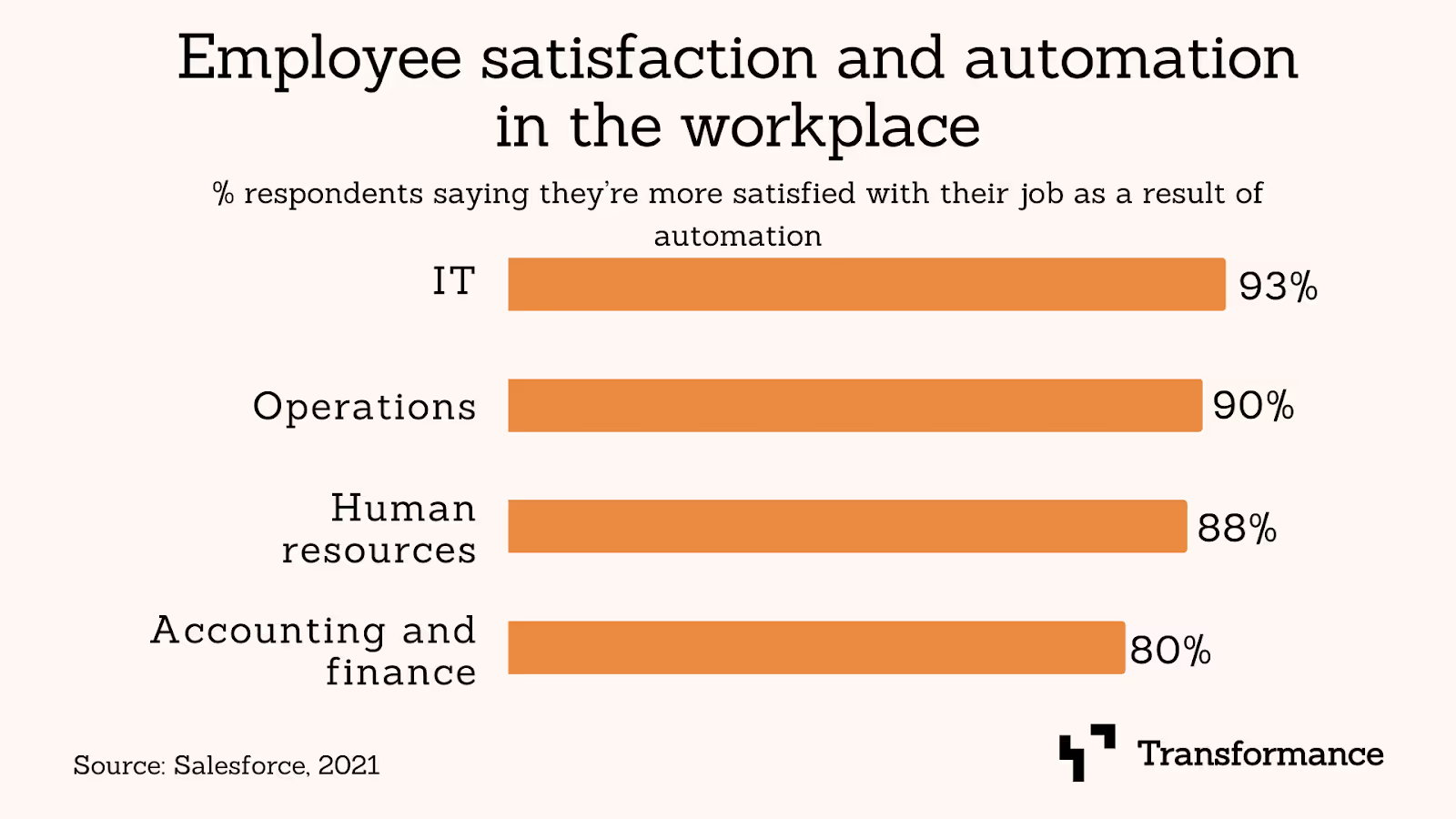
SAP automation use cases
Given the benefits of SAP automation, executives must consider where their enterprise can apply these benefits for their teams.
For SAP users, we are focusing on the 4 core support functions: Finance, IT, procurement, and HR. It should be noted that teams like customer support, sales or marketing can also benefit from automation. However, these are not core SAP functions and are therefore not the subject of this article.
Finance automation use cases
Finance is among the most comprehensive and complex functions in SAP. Most other functions and processes eventually lead to Finance as it manages the General Ledger (GL), Accounts Payable (AP), Accounts Receivable (AR), Cash Management and Reporting and Analyses (FP&A).
Within the wide breadth of finance processes, SAP-specific requirements and limitations need to be taken into account when considering SAP automation.
For GL processes, journal entries are most important to optimize and automate. The journal entry format in SAP is extremely specific and only advanced SAP custom development tools like Transformance are able to enable automated posting from diverse sources.
AP automation is mainly aimed at increasing the processing speed of invoices and purchase orders (POs) to improve vendor relationships. AR automation covers the entire order-to-cash (O2C) process to assure that sold products and services result in timely cash flow. Both AR and AP optimization are key for improving a company’s working capital.
FP&A processes must enable the business to have full, near-real-time visibility into their data and KPIs so the business can make decisions and improve financial planning faster. Especially comprehensive data transformation (ETL) capabilities are important to assure data is clean, comprehensive and actionable. Best-in-class tools like Transformance include ETL capabilities in their platform.
IT automation use cases
IT is the backbone of all digital tools and processes in any company. The team assures that apps are running, data is flowing and users are enabled to add business value.
IT KPIs include uptime of IT assets, incident solution time, and security compliance. SAP automation can improve all of the core IT KPIs.
Monitoring and performance management can be improved by leveraging SAP Solution Manager to automate health checks, performance tuning, and proactive issue resolution. However, good SAP automation tools will also improve processes and integrations with third party tools to ensure better outcomes
Data integration can be done natively in SAP using SAP Data Services to ensure seamless integration between SAP and non-SAP systems. However, the tool does have limitations including its usability and high price. Alternatives like Transformance can help teams integrate and automate data from SAP with other tools easier and faster.
Incident management needs to make sure service level agreements (SLAs) are adhered to throughout the IT organization. Faster incident tracking and the integration of core systems like JIRA, ServiceNow with SAP are essential to make sure teams can focus on solving issues rather than tracking them through various different systems.
Procurement automation use cases
Procurement is a critical function in any organization. SAP Ariba is the core SAP procurement product and has a variety of modules which automate much of the procurement process.
The core procurement processes in SAP include supplier onboarding, PO processing, invoice reconciliation, and contract management.
Supplier onboarding can be largely automated using SAP Ariba Supplier Lifecycle and Performance but the tool is often seen as clunky and difficult to use by suppliers. The core goal of SAP automation should be to make this process as fast and efficient as possible.
PO processing is an essential procurement process whereby the creation, tracking, and approval of purchase orders should be as fast as possible to streamline procurement cycle times. Many SAP automation tools include PO processing workflows.
Invoice reconciliation describes the matching of invoices, POs, and goods receipts to reduce discrepancies and improve payment accuracy. Modern tools include matching algorithms to match even more unstructured documents like PDF scans with OCR and other machine learning.
Lastly, while all of the above can be done in SAP Ariba, systems like Coupa are getting more popular to use alongside the core SAP ERP as they cater even better to the needs of procurement teams. SAP automation tools should thus assure that data can flow quickly, accurately, and efficiently from such systems to SAP S/4 HANA to avoid internal conflict with Finance and other teams.
HR automation use cases
Human Resources (HR) processes touch all prospective, current and often former employees of a company. The core module in SAP is called SAP Successfactors covering recruiting, HR and payroll. SAP Concur is relevant for companies managing employee expenses, travel and perks.
In both modules a variety of SAP automations exist, however, many users struggle with automating processes like SAP CATS (Cross-Application Time Sheet) postings or payroll processing, especially for service businesses which often need a variety of integrations to accurately and efficiently post and bill their service charges.
While SAP includes a lot of functionality in their product, many companies opt for HR systems like Replicon or Workplace. Automating and integrating such tools with the core SAP ERP with platforms like Transformance is essential to ensure teams can work efficiently regardless of their tech stack.
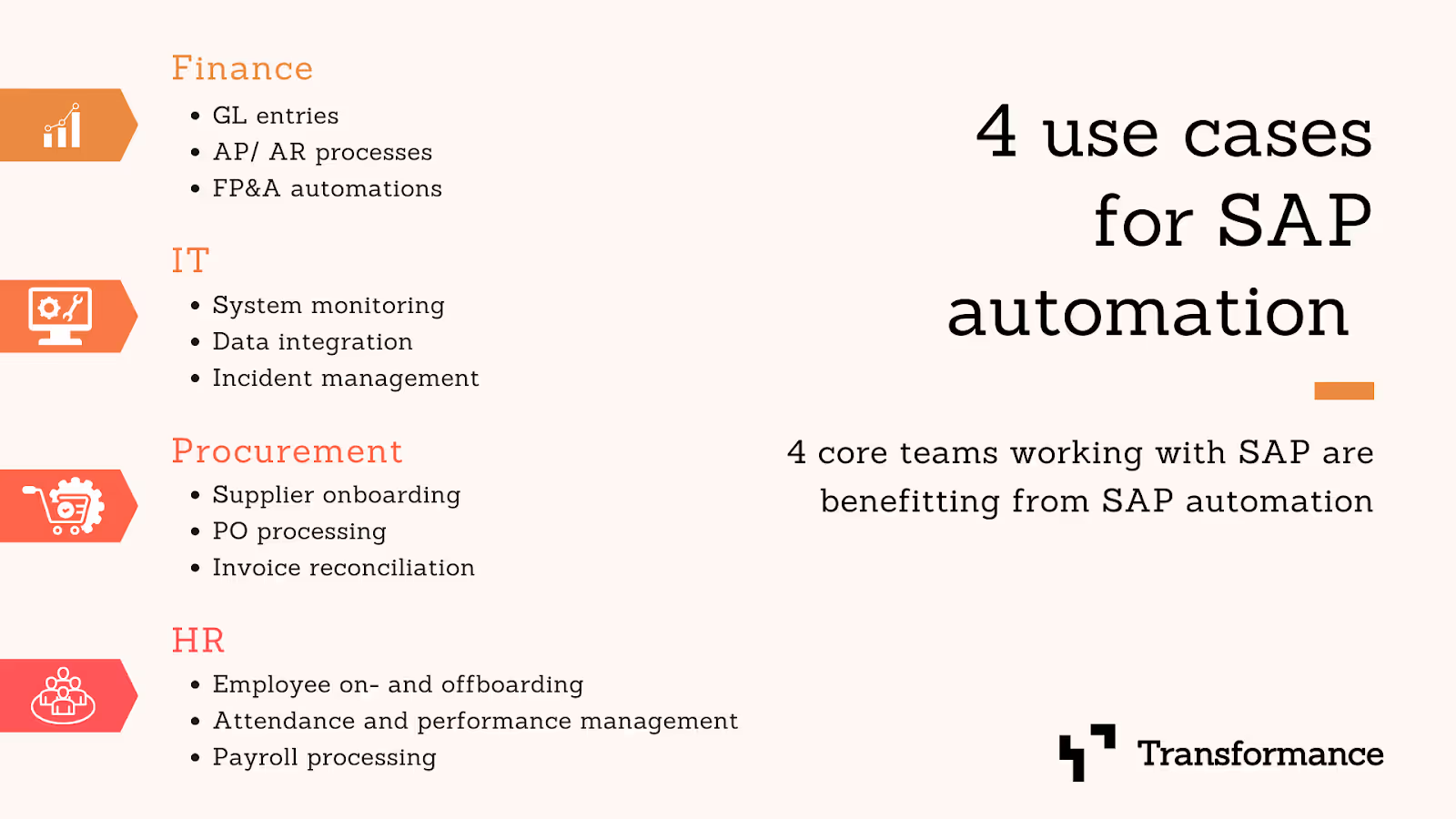
3 Popular SAP Automation Tools
Teams looking to automate their SAP processes must decide on the best platform to pick which covers all their needs. We have listed 3 of the best solutions for SAP automation and compared them on their strengths, weaknesses and pricing.
Transformance: The most powerful AI-native solution
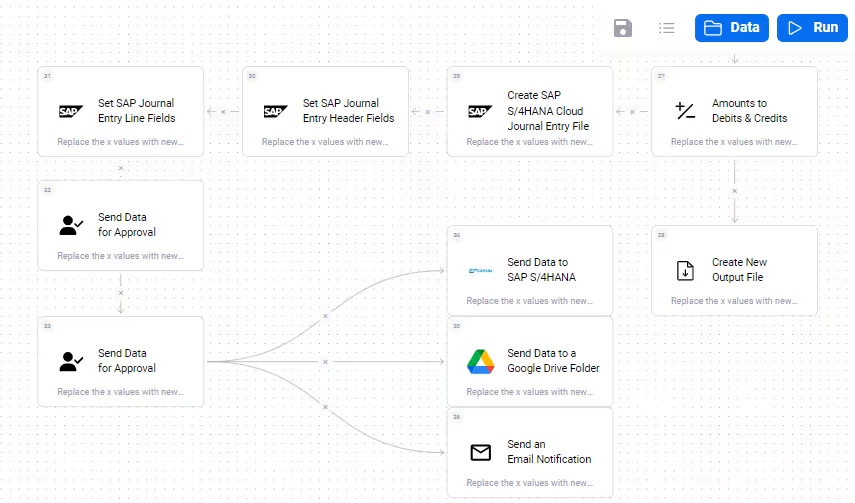
Transformance is an AI-native platform designed to revolutionize workflow automation and custom application development. Transformance excels in automating complex processes and building full-stack custom applications for large enterprises in minutes. Its intuitive interface enables business users to create and automate tasks and build applications through natural language inputs, eliminating the need for developers. The advanced AI-driven agent allows users to create workflows, automate transformations, and build business apps at scale through simple natural language commands in the Transformance platform.
Pros:
- AI agent understands natural language to build custom SAP apps better and faster
- Enterprise-grade capabilities
- Deep domain knowledge embedded
- Seamless SAP integration
Cons:
- Limited community support due to being a newer player
Price: From $299/ month per admin user and $29/ month per business user.
For more details on Transformance features and pricing book a free consultation.
SAP Business Technology Platform (SAP BTP): the SAP-native solution
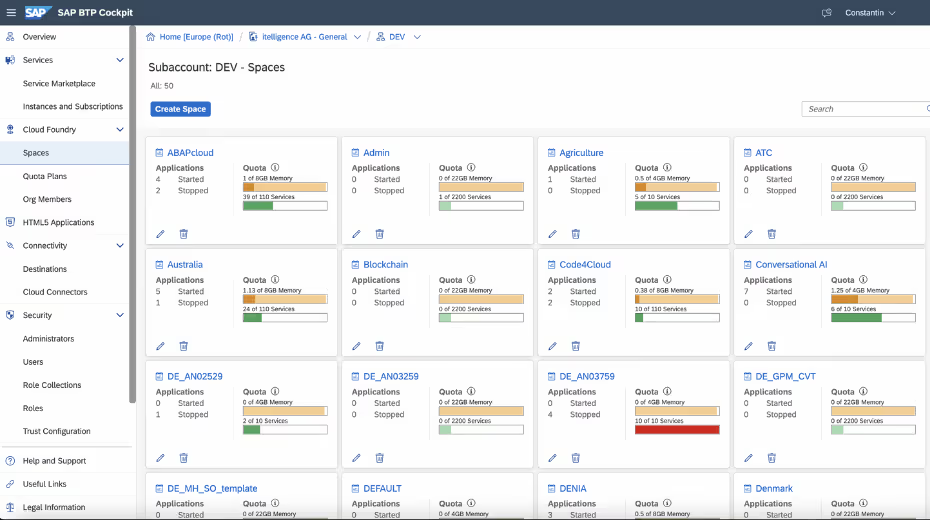
The SAP Business Technology Platform (SAP BTP) is a unified environment that integrates application development, automation, data management, analytics, and AI, optimized for SAP cloud applications. It enables development and deployment of business applications for SAP and supports integration with SAP and third-party systems. SAP BTP is directed at developers to extend and enrich mission-critical processes, while business users can automate workflows and create personalized interfaces using low-code solutions.
Pros:
- SAP-native integration
- Scalable and secure
- Extensive documentation and support
- Pay-as-you-go option available
Cons:
- Limited integration with 3rd party apps
- Challenging learning curve for non-technical users
- High price tag at scale
Price: $10,852/ year for enterprise agreement. Free trial and pay-as-you-go options available for pilots.
Tip: For a comprehensive summary read our article “What is SAP BTP?”
SAP Build
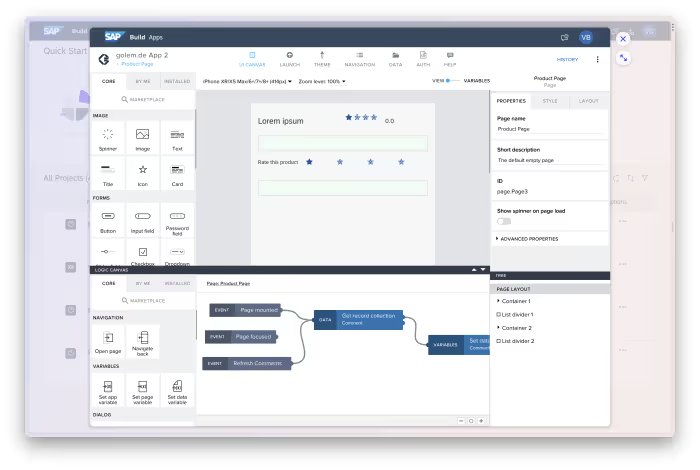
SAP Build is another tool within the SAP ecosystem that allows users to create applications with minimal coding. It integrates seamlessly with SAP BTP, making it a complementary tool rather than a direct alternative. The tool is powerful and low-code. However, for a wider team of business users the SAP-only compatibility can be very limiting.
Pros:
- Includes mobile app for iOS and Android
- Drag-and-drop functionality for integrating functions and plugins
- Comprehensive guides and tutorials available
Cons:
- UI/UX can be challenging to navigate
- Coding skills needed despite no-code promise
- Lack smooth integration with other SAP BTP services
Price: Standard User ca. $25 / user per month, requires at least 1 advanced user at ca. $180/ user per month. Attended and unattended automation at $6,000/ year.
For more information about the best SAP automation tools read our article “The best SAP automation tools in 2025”.
Conclusion: SAP automation in 2024
The power of automation in SAP cannot be overstated. By implementing automation solutions, businesses can enhance efficiency, increase business value, reduce errors, improve compliance, and create happier teams.
Finance, IT, procurement and HR are core teams benefitting from SAP automation. While many automations exist within SAP, AI native custom development platforms like Transformance are best equipped to unleash the value of automation for SAP users by transforming data, as well as integrating and automating processes.
Want to find out how Transformance can help you get more out of SAP? Book a free consultation today!






